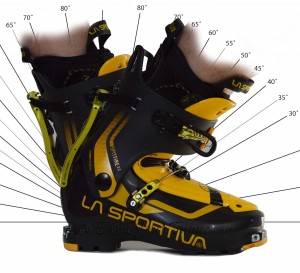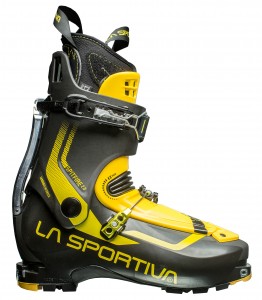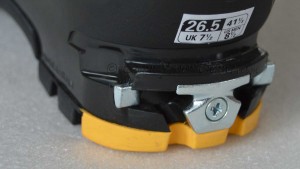During my stint in Tahoe a lot of fellow turn earners wondered why the resorts wouldn’t allow uphill skinning. Now that I’m in Colorado, it is more obvious why rando races flourish here, and with it the opportunity for fitness skinning at resorts, but they’re rare in the Sierra.
In California, especially around Lake Tahoe, the approach for a tour is across the road. We all whined like hell when the US Forest service closed Spring Creek Road and we had to walk an extra mile over flat, inconsistently covered, bushwacky terrain to get to the slopes of Mt. Tallac. Woe is us, we can’t just start skinning from the road like at Jakes, or Incline, or Red Lake Peak.
Rando Reality
It doesn’t take long looking at topo maps to figure out a standard Colorado approach is at least a mile, probably more. This reality spawns two reactions. Buy a snowmobile and/or, train harder because the trailheads are not just long, most are at or above 9000 feet.
Rando races are a great way to train. For training you want a gym setting where you don’t have to concern yourself with peripheral things like avy danger. Ski resorts fill the need, and demand has created the opportunity. Add a dash of competition to give economic incentive to the resorts, and for the participants it’s an excuse to fuel speed. For those who play the skimo race game, when you need to move a long ways in a short amount of time, at altitude, racers can.This all dawned on me while checking out Hidden Valley, the closest reliable trailhead near Longtucky, Colorado. While headed up the main trail on the north side of Tombstone Ridge, two guys passed me like a shot. I was breathing so hard in the thin air I didn’t hear them running up on me until they were in my peripheral vision. It would be easy to blame my heavy boots. Their’s were definitely lightweight, state-of-the-art, genuine Dynafit stuff, and they sprinted by like they were easily 20 years younger, but perhaps most importantly, that lightweight gear meant they trained for this. Which was why I was there, sans the race.
Even though the prospect of deep turns, or even carveable windboard disappeared with each step up, the main reason I was there was to get acclimated to higher altitude skinning. The average trailhead around Colorado’s Front Range is higher than the peaks on the rim of Lake Tahoe. I was starting above where I used to finish.Thus, when I was invited to join a dawn patrol COSMIC series rando race at A-Basin, I jumped at the chance. While I was at it, I gave La Sportiva’s Spitfire AT race boot a whirl, the improved 2.0 version.
Downhill Chops
The worst part about this boot is it doesn’t telemark well at all. It does okay on alpine turns owing to a surprisingly stiff cuff for as light as the boot is. With poor visibility I had a hard time adapting to a locked heel with a rigid cuff, but as I descended below the clouds I could anticipate better and was able to drive the cuff well.
Long Stride Skinning
Where the Spitfire excelled was the cuff range of motion which allowed me to extend my stride enough on a moderately pitched 20° track that I didn’t need to use a climbing post, which further extended my stride, without losing skin grip. Only in my dreams can my teleboots do that.

Marketing numbers claim 68° Range of Motion. Reality is always less, but not by much in La Sportiva’s case.
When the top buckle is loose, it allows Vertebra Technology, a long beefy aluminum backbone, to unclip from the top of the cuff. This vertebra moves unrestricted as your leg flexes fore and aft. There is no resistance from the bar, only what is inherent in the cuff and the flex resistance of the foam liner. In other words, enough for balance, but nothing to limit stride.
A key part the Spitfire’s ankle flexibility, and thus real world range of motion, is La Sportiva’s EZ Flex tongue. A soft, pebax cuff has enhanced flexibility courtesy of a soft rubber insert molded in an accordion structure at the “elbow” of the tongue. It flexes with much less resistance than a unitary molded plastic tongue.
Fit
Overall this boot felt low volume and tight. Other than the top cuff buckle there is only one other, a Pegasus buckle over the instep. I was surprised at how tight this boot was over my trademark low instep. I had it as loose as it could go and it was tight. Warning — that’s not a good sign for anyone with high volume feet. My toes were squished tight too, which was surprising since the boot width is rated at 102mm, which is wide. Scarpa’s F1 Evo has the same rating, looks just as narrow, but felt comfortable with a 102mm rating. The Spitfire is undeniably narrower, but how much I can’t say other than I took advantage of a warm building to take my feet out to let the blood flow again. I am confident that heat molding the liner would probably cure the sensation of squished toes, and even if it didn’t, the Grilamid lower shell will punch easily to expand width and a good bootfitter can do that in under an hour.
Tech Compatible
One less obvious feature of the Spitfire, but one that could make a difference if you were interested in the Ski Trab tech binding is metal prongs embedded in the heel of the boot for use with the TR2. This binding offers some serious heel holding power with lateral release at the toe.Summary
There is no doubt the Spitfire can help you climb fast through the combination of light weight and easy ankle flexibility to extend your stride and lighten the load on your lungs and legs. As a lightweight boot it sports some serious muscle for turning, but you’ll definitely want to dial in your forward pressure with some practice at a resort. In short, it’s a quintessential skimo boot that you can really race with, even if it’s just a personal best. You may still opt for a heavier boot with a more progressive flex if you’re chasing mid-winter face shots or when the snow is transitioning to spring mush. Once it firms up though, either as windbuff or corn, you’ll appreciate how far you can travel to leave great tracks with La Sportiva’s Spitfire.
La Sportiva
Spitfire 2.0
MSRP: $995
Weight/boot (sz 26.5): 1100 g • 2 lbs., 6 oz.
Last width: 102 mm
Sizes available (mondo): 24.0 – 31½
© 2015





Recent Comments